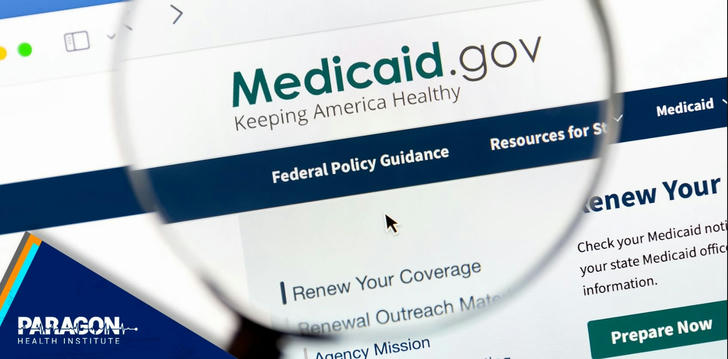U.S. Health Insurance Guide: Which Plan Is Right for You
In the U.S., a single ER visit can easily cost thousands of dollars—and a short hospital stay might break into five figures. Without health insurance, even minor medical procedures could lead to serious financial stress for many families. Fortunately, both federal and state governments have built a layered system of health insurance programs to help individuals across all income levels and life stages. You don’t need to be wealthy or retired to qualify for meaningful coverage.

📉 The Reality: High Costs & Low Awareness
- Skyrocketing Costs: The U.S. has the highest healthcare expenses globally. Even one prescription can feel overwhelming.
- Undercoverage: Many low-income households and freelancers go without insurance, leaving them financially exposed.
- Lack of Awareness: Millions of people actually qualify for coverage—but miss out simply because they don’t understand programs like Medicaid, CHIP, or ACA subsidies.
💡 Knowing what you’re eligible for is the first step to protecting yourself and your family.
🧩 Overview of Common U.S. Health Insurance Support Programs
1. Medicaid: Public Health Coverage for Low-Income Individuals
Who qualifies: Low-income adults, seniors, pregnant individuals, and people with disabilities.
What’s covered: Doctor visits, hospital stays, lab work, prescriptions, mental health services—and in some states, dental care and transportation assistance.
How to apply: Through your state’s Medicaid portal or on Medicaid.gov
Best suited for: Unemployed or low-income individuals, seniors, pregnant people, and those with disabilities.
📌 If you live in an expansion state (like California, New York, or Michigan), you may qualify even if you don’t have children.
2. CHIP (Children’s Health Insurance Program)
Who qualifies: Children in families with incomes too high for Medicaid but who still need help; some pregnant women may also qualify.
What’s covered: Dental, vision, immunizations, prescriptions, hospital care, and routine checkups.
Cost: Very low. In some states, most costs are supported by the program, and families pay minimal out-of-pocket.
Best suited for: Families with children under 18 who aren’t eligible for Medicaid.
🔍 Example: Mrs. Chen’s family income was slightly above the Medicaid threshold. Her child received full medical and dental coverage through CHIP, with monthly costs under $10.
3. ACA Marketplace Plans: Subsidies for Middle-Income Households
What it is: The Affordable Care Act (ACA) Marketplace offers insurance plans with sliding-scale premium subsidies.
Recent updates: As of 2025, the Inflation Reduction Act has extended subsidies—families earning up to 400% of the Federal Poverty Level may qualify.
Cost highlight: Some individuals pay as little as $10/month after subsidies.
Best suited for: Freelancers, gig workers, or anyone whose employer doesn’t offer insurance.
4. SEP (Special Enrollment Period): Qualify Anytime Life Changes
Triggers: Moving, losing a job, getting married or divorced, having a child, or turning 26 and aging off a parent’s plan.
Deadline: You have 60 days from the event to apply, with some options for retroactive coverage.
Best suited for: Recently unemployed, self-employed, or returning U.S. residents.
📊 Age-Based Recommendations and Real-Life Examples
| Age Group | Recommended Plan(s) | Why It Works |
|---|---|---|
| Children (0–18) | CHIP or Medicaid | Low costs and strong benefits including dental, vaccines, and checkups |
| Adults (19–64) | Medicaid (if eligible) or ACA plans | Works well for freelancers, hourly workers, or the temporarily unemployed |
| Seniors (65+) | Medicare + Medicaid supplement | Covers outpatient, inpatient, and long-term care with minimal out-of-pocket |
| Disabled persons | Medicaid + PACE or HCBS | Prioritizes in-home care and improves quality of life |
📌 Real Example: Mr. Wang, age 63, lost his job and skipped regular checkups due to cost. With help from his state Medicaid office, he enrolled and was diagnosed with high blood pressure in time to avoid a stroke.
🧭 Summary: Comparing the Key Programs
| Program Type | Who It's For | What's Covered | Ideal Use Case |
|---|---|---|---|
| Medicaid | Low-income individuals & families | Medical, prescriptions, rehabilitation | For those in financial need or with health conditions |
| CHIP | Children in low-to-moderate income families | Dental, vision, hospital, and pediatric care | Parents seeking affordable care for kids |
| ACA Subsidies | Middle-income earners | Premium discounts up to 44% | Freelancers, entrepreneurs, those without employer plans |
| SEP | People with qualifying life events | 60-day flexible enrollment window | Moving, marriage, divorce, job change, new baby, etc. |
🔍 Common Misunderstandings
“I earn too much to qualify.”
→ False. Families earning up to $90,000/year may still get help through the ACA.“Insurance is too expensive—I’ll just pay out-of-pocket.”
→ Risky. One ER visit can cost as much as half a year’s income.“The policies are confusing, I don’t know who to trust.”
→ Stick with official sources like Healthcare.gov and KFF.org for reliable updates.
✅ Pro Tips
- Low-income or uninsured? Start with Medicaid or CHIP.
- Middle-income family? Visit the ACA Marketplace to check your subsidy.
- Major life event? Don’t wait for open enrollment—you likely qualify for SEP and can apply today.
